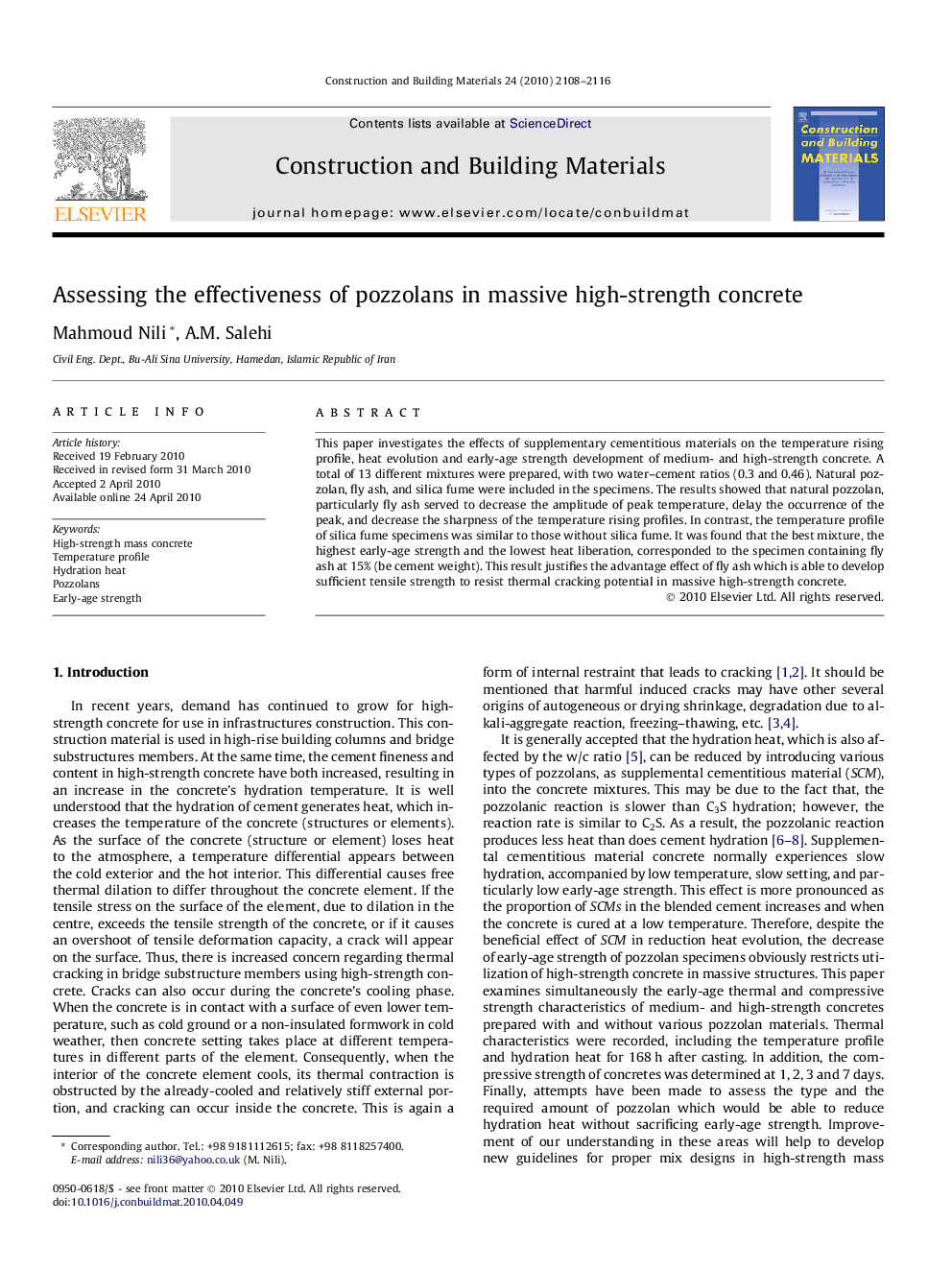| Article ID | Journal | Published Year | Pages | File Type |
|---|---|---|---|---|
| 259874 | Construction and Building Materials | 2010 | 9 Pages |
This paper investigates the effects of supplementary cementitious materials on the temperature rising profile, heat evolution and early-age strength development of medium- and high-strength concrete. A total of 13 different mixtures were prepared, with two water–cement ratios (0.3 and 0.46). Natural pozzolan, fly ash, and silica fume were included in the specimens. The results showed that natural pozzolan, particularly fly ash served to decrease the amplitude of peak temperature, delay the occurrence of the peak, and decrease the sharpness of the temperature rising profiles. In contrast, the temperature profile of silica fume specimens was similar to those without silica fume. It was found that the best mixture, the highest early-age strength and the lowest heat liberation, corresponded to the specimen containing fly ash at 15% (be cement weight). This result justifies the advantage effect of fly ash which is able to develop sufficient tensile strength to resist thermal cracking potential in massive high-strength concrete.
